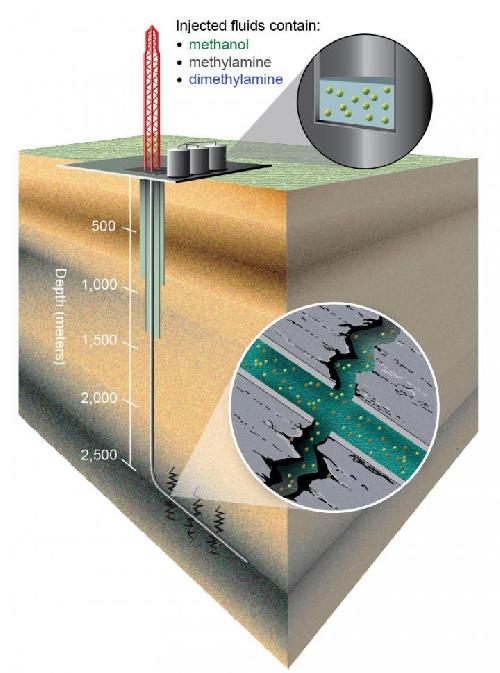When you think of it, all of the natural gas harvested by hydraulic fracturing is natural but groups that once embraced it as clean energy have now turned on it and have sought to use its biological origins against it, with manufactured videos of flaming tap water and such that have nothing to do with fracking.
They, and the anti-science groups like SourceWatch and Natural Resources Defense Council that they fund, can continue to lobby for a retreat into the past but the fact that some natural gas made by microorganisms is inadvertently injected into shale by oil and gas companies during the hydraulic fracturing process means that, in the future, bacteria and archaea might one day be used to enhance methane production--perhaps by sustaining the energy a site can produce after fracturing ends.
The discovery is a result of the first detailed genomic analysis of bacteria and archaea living in deep fractured shales, and was made possible through a collaboration among universities and industry. The project is also yielding new techniques for tracing the movement of bacteria and methane within wells.

"A lot is happening underground during the hydraulic fracturing process that we're just beginning to learn about," said principal investigator Paula Mouser, assistant professor of civil, environmental and geodetic engineering at The Ohio State University.
"The interactions of microorganisms and chemicals introduced into the wells create a fascinating new ecosystem. Some of what we learn could make the wells more productive."
Oil and gas companies inject fluid--mostly water drawn from surface reservoirs--underground to break up shale and release the oil and gas--mostly methane--that is trapped inside. Though they've long known about the microbes living inside fracturing wells--and even inject biocides to keep them from clogging the equipment--nobody has known for sure where the bacteria came from until now.
"Our results indicate that most of the organisms are coming from the input fluid," said Kelly Wrighton, assistant professor of microbiology and biophysics at Ohio State. "So this means that we're creating a whole new ecosystem a mile below the surface. Not only are we fracturing the rock, we're giving these organisms a new place to live and food to eat. And in fact, the biocides that we add to inhibit their growth may actually be fueling the production of methane."
That is, the biocides kill some types of bacteria, thus enabling other bacteria and archaea to prosper--species that somehow find a way to survive in water that is typically four times saltier than the ocean, and under pressures that are typically hundreds of times higher than on the surface of the earth. Deprived of light for photosynthesis, these hardy microorganisms adapt in part by eating chemicals found in the fracturing fluid and producing methane.
Next, the researchers want to pinpoint exactly how the bacteria enter the fracturing fluid. It's likely that they normally live in the surface water that makes up the bulk of the fluid. But there's at least one other possibility, Wrighton explained.
Presented at the American Geophysical Union meeting in San Francisco.





Comments